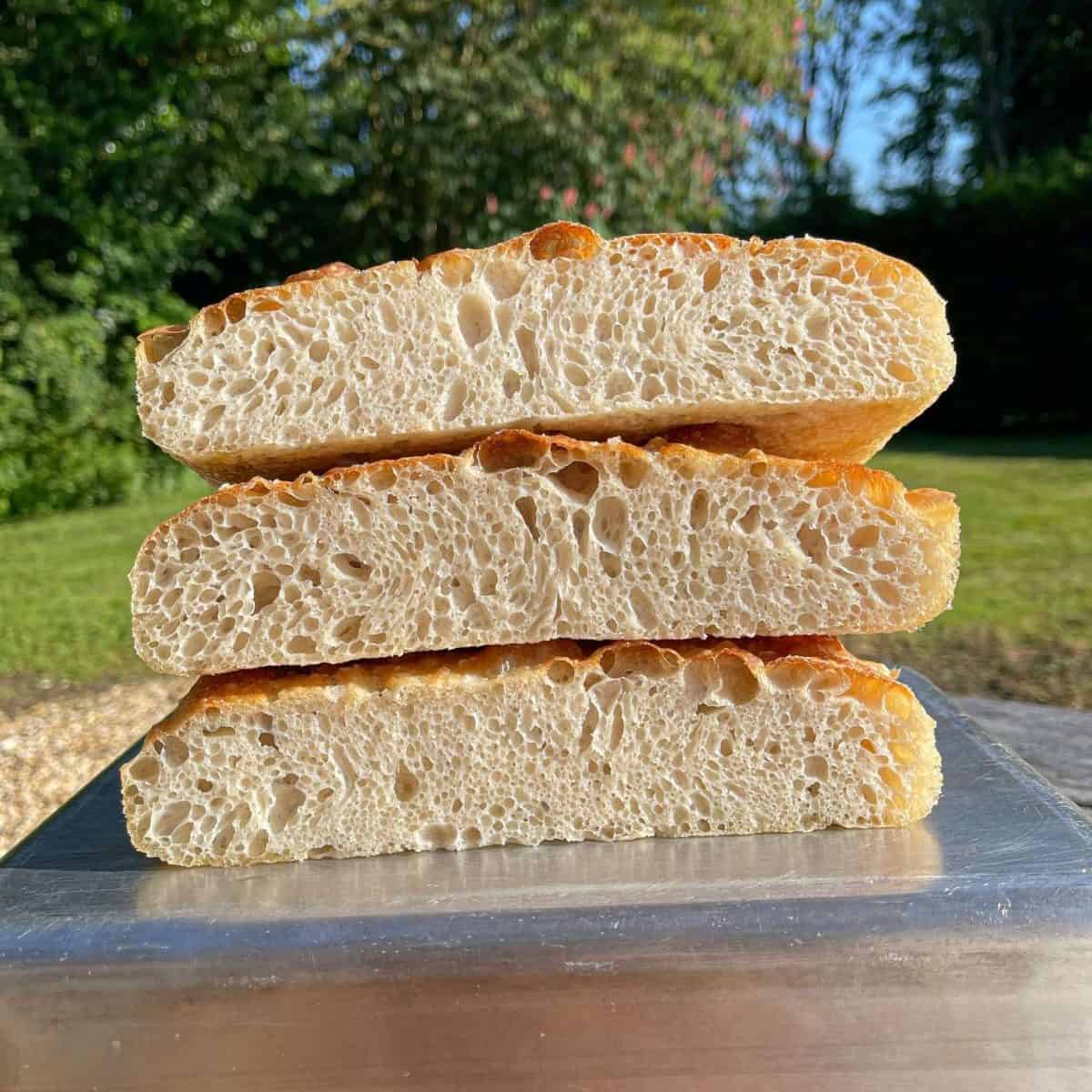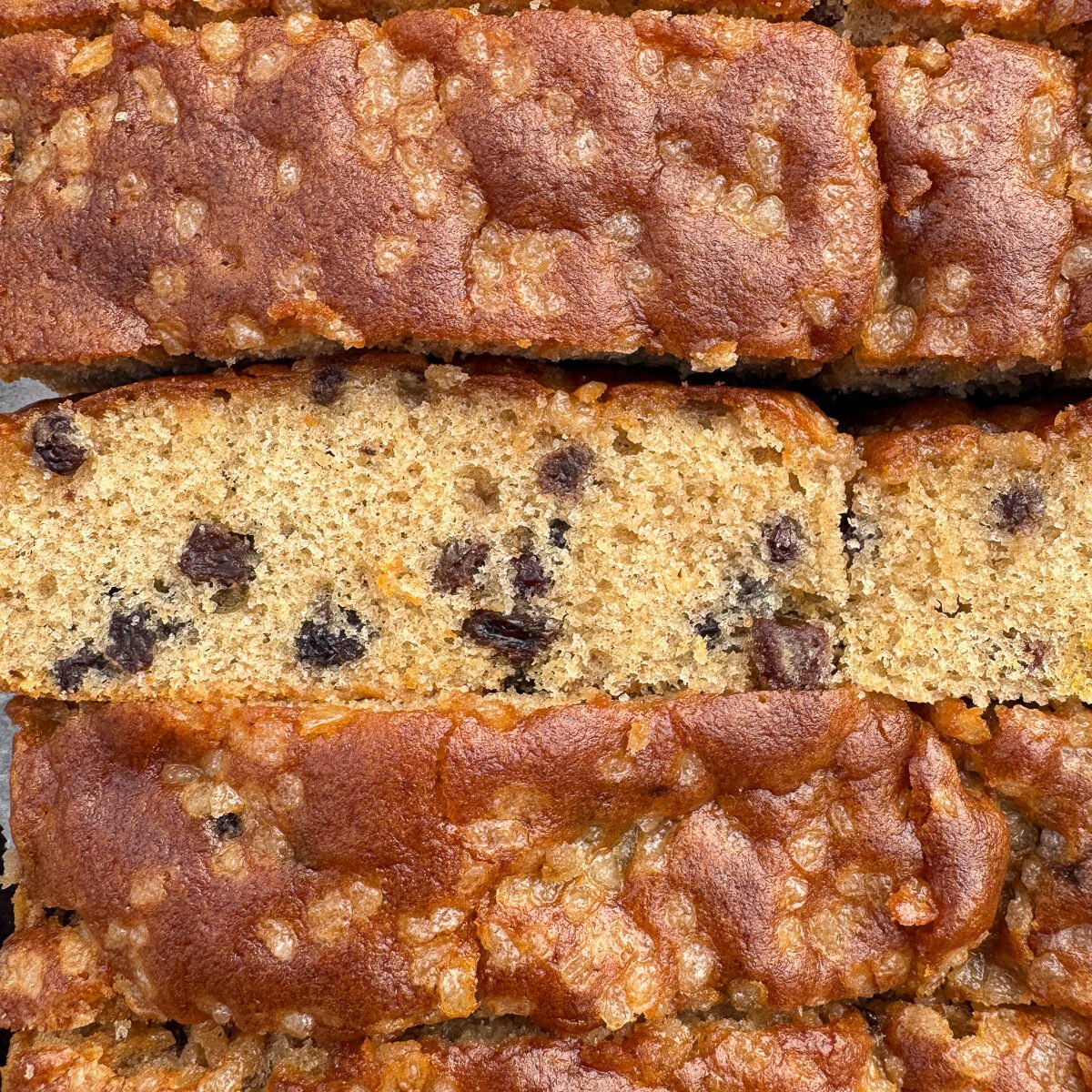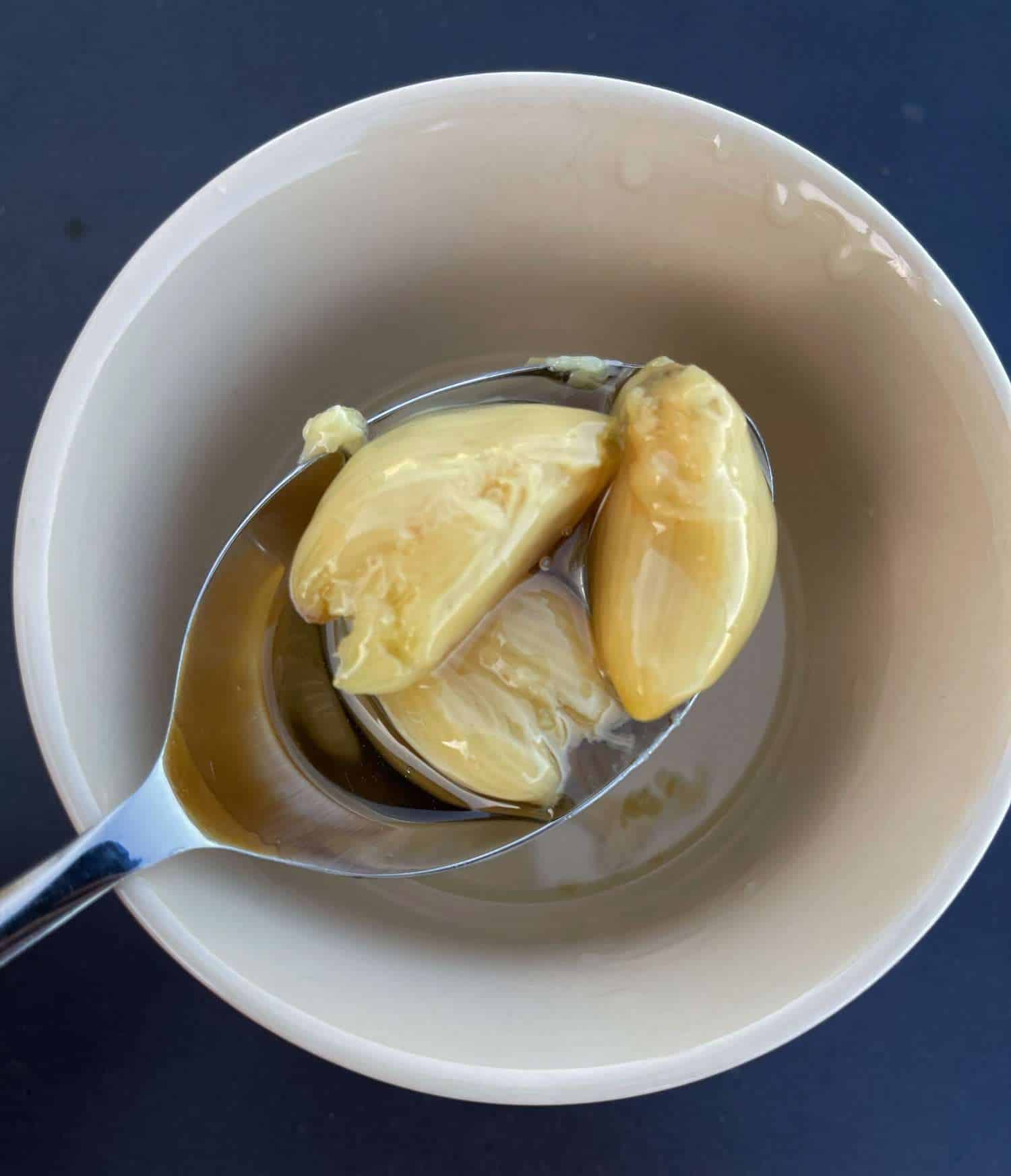How To Make A Sourdough Starter
Putting it simply, a sourdough starter is a living culture of wild yeast & bacteria which is made by mixing flour & water & allowing it to ferment. Arguably the most important ingredient in sourdough bread, it is what allows sourdough to rise without the use of commercial yeast. It is also what gives sourdough its’ distinct sour flavour.
A sourdough starter is a living thing & needs to be fed regularly in order to be strong enough to be used for baking. There are many ways to make & maintain a starter, this is how I do mine…

What Is A Sourdough Starter?
Made from fermented flour & water, a sourdough starter is what allows bread to rise without the use of commercial yeast. It is also what gives sourdough bread its’ distinct sour flavour.
Sometimes called a levain, this is a living thing, made up of wild yeasts & bacteria. This means that it needs to looked after in order to be baked with. To do this, we must feed it on a regular basis (at least once but usually two or three times a day) using a combination of flour, water & a small amount of ripe starter. To keep things simple, I like to feed mine with equal quantities of each ingredient. This is what’s known as a 100% hydration starter.
When Can I Bake Bread With My Starter?
Following this guide, your starter can be ready to bake with in as little as 7 days!
Once it is rising (at least double in size) & falling predictably, it’s ready to use. You should also see lots of tiny bubbles in your starter. This means that it’s active.
Another way to test your starter is to place a small amount into a bowl of cold water. If it floats it’s active enough to bake bread with. But keep in mind that this method isn’t 100% accurate so your best bet is to keep an eye on how much your starter is rising & how bubbly it is.
How Can I Tell When My Starter Needs Feeding?
With my starter, I like to stick to a schedule of feeding it every 12 hours. As you build up the strength of your starter, you should feed it when you see that it’s hungry.
If you keep an eye on your starter after it has been fed, you’ll notice that over several hours, it will double (at least) in volume & form lots of tiny bubbles. Eventually it will stop increasing in size, which means it has reached it’s peak. At this point, it will start to fall, decreasing in volume. This is the sign that it is hungry & needs to be fed.
If your starter hasn’t been fed in a while you might notice a dark liquid sitting on the top. Don’t worry, this is called hooch & is a completely harmless sign that your starter is hungry. Simply discard the hooch & continue feeding as normal.
How To Feed A Sourdough Starter
To feed your starter, you take small amount of ripe starter & feed it with equal quantities of flour & water. The remaining starter is called discard & can be thrown away or used in a discard recipe. It can be used for crackers, pancakes or even cookies.
How Long Will My Starter Last & How Should I Store It?
Providing that you feed it on a daily basis, your starter will last forever!
To Store In The Fridge.
If you don’t want to feed your starter daily, it will keep for several months, unfed in the fridge.
To keep it healthy, after a month or two, you should pull your starter out of the fridge & give it a feed.
Before storing in the fridge, your starter should be fed & placed in a clean jar/container then left at room temperature for an hour. At this point it can be refrigerated & left untouched.

Making A Sourdough Starter From Scratch – Step By Step
Day 1.
In a mixing bowl, combine 30g white flour, 30g wholemeal flour & 60g water (78°F/26°c). Transfer to the glass jar, loosely fit the lid & leave at room temperature (roughly 26°C) for 24 hours.
Day 2.
Add 30g white flour, 30g wholemeal flour & 60g water to your starter & stir to combine. Leave at room temperature for another 24 hours.
Day 3.
Take 60g of starter from the jar & place into a mixing bowl. Discard the remaining starter from the jar. To the mixing bowl, add 30g white flour, 30g wholemeal flour & 60g water. Place back into the jar & leave at room temperature for a further 24 hours.
Day 4–7.
Your starter should now be showing signs of activity so will now need feeding twice a day (feedings 12 hours apart). Each time you feed your starter save 60g starter (discard the rest) & mix in 30g white flour, 30g wholemeal flour & 60g water.
You starter should now be doubling in size after every feed (this should take between 8-12 hours after feeding). If so, it is now ready to bake with.
If it isn’t, keep feeding it twice daily until it does. This could take anywhere from 2 more days or up to another week.
Storing, Feeding, Baking
At this point, you can carry on feeding the starter twice a day until you want to use it or you can store it in the fridge. Storing in the fridge means that your starter can survive for several weeks without being fed. The low temperature of a fridge slows the starter down, basically putting it to sleep.
Some Of Our Favourite Sourdough Recipes
- Step By Step Sourdough
- Brown Butter & Malt Porridge Sourdough
- Toasted Sesame & Honey Polenta Sourdough
- Sourdough Cinnamon & Pecan Rolls
- Pumpkin Seed Sourdough
- Sourdough Focaccia
How To Make A Sourdough Starter
Equipment
- Glass Jar With A Loose Fitting Lid
- Digital Food Probe
- Digital Scales
Ingredients
- 1 kg Strong White Bread Flour
- 1 kg Strong Wholemeal Flour
- 1 Litre Water 78°F/26°C
Instructions
- Day 1In a mixing bowl, combine 30g white flour, 30g wholemeal flour & 60g water (78°F/26°c). Transfer to the glass jar, loosely fit the lid & leave at room temperature (roughly 26°C) for 24 hours.
- Day 2 Add 30g white flour, 30g wholemeal flour & 60g water to your starter & stir to combine. Leave at room temperature for another 24 hours.
- Day 3Take 60g of starter from the jar & place into a mixing bowl. Discard the remaining starter from the jar. To the mixing bowl, add 30g white flour, 30g wholemeal flour & 60g water. Place back into the jar & leave at room temperature for a further 24 hours.
- Day 4 – 7Your starter should now be showing signs of activity so will now need feeding twice a day (feedings 12 hours apart). Each time you feed your starter save 60g starter (discard the rest) & mix in 30g white flour, 30g wholemeal flour & 60g water.You starter should now be doubling in size after every feed (this should take between 8-12 hours after feeding). If so, it is now ready to bake with. If it isn’t, keep feeding it twice daily until it does. This could take anywhere from 2 more days or up to another week.
- Storing, Feeding, Baking…At this point, you can carry on feeding the starter twice a day until you want to use it or you can store it in the fridge. Storing in the fridge means that your starter can survive for several weeks without being fed. The low temperature of a fridge slows the starter down, basically putting it to sleep.







